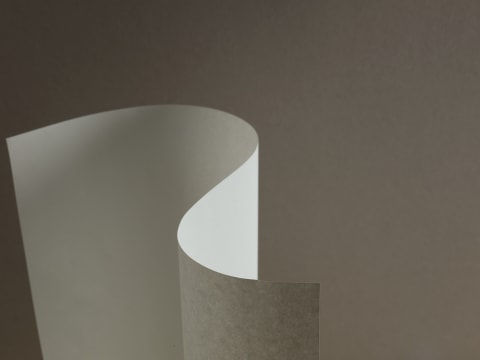
Some words on Tomoe River.
A quick 2021 update:
Hello. We're seeing an uptick in visits from folks to this piece, looking to find information on the rumoured discontinuation of Tomoe River writing paper.
This newsletter is from 2020 and discusses the changes from old Tomoe River (machine 7) to new Tomoe River (machine 9). While the changes to the paper are as described, and continue to be valid, what's written here does not cover any new developments to Tomoe River production in 2021. Please keep this in mind when reading and linking this newsletter.
That said, there are indeed changes afoot. We'll release more information when our sources confirm that a decision has been finalised.
Stay safe!
Hello again. Daryl here. I hope you’re all safe and well.
You may have heard some buzz in the community regarding changes to the manufacture of Tomoe River.
I’ve always worked to be transparent about our decision-making process, so I want to lay everything out for our subscribers in as clear a manner as possible.
What’s happening to Tomoe River?
The manufacture of Tomoe River for stationery purposes has moved to new machinery. The old machinery is out of service and therefore no longer in use.
For the avoidance of doubt, this change applies to both colours of Tomoe River: white and cream.
Is the paper any different?
In short, yes.
The new Tomoe River exhibits the following changes:
- It runs slightly thicker than the previous version when stacked up.
- It is stiffer in the hand, and less crinkly than the old version.
- The writing experience is different. There’s no good way to describe it, but the paper feels a little drier and has more drag.
- Some inks show up on the new version as a slightly different colour from what you might be used to on the old version.
- Some inks that have a particularly vivid amount of sheen have had their sheen, for want of a better word, flattened out by the new paper.
- There is reduced definition along the edges of each line.
- Finally, the increased thickness has resulted in less ghosting.
Things that, as far as we can tell, haven’t changed much if at all:
- The new version is still hardy against inks, and displays little to no bleedthrough to the other side of the page.
- The dry time is still the same; that is to say, ink dries slowly on Tomoe River, as it always has.
What is causing these changes?
As you know, Tomoe River consists of a centre core of paper pulp, with a coating/sizing layer applied to both sides of the paper in order for it to be able to handle ink properly. The new version of the paper has a thicker paper core and thinner coating/sizing.
This is likely what is causing the change in writing experience — the paper now feels slightly more cushioned because of the increase to the pulp layer, and for the same reason it runs thicker than before when stacked up, despite keeping the same gsm (grams per square metre) count.
(Remember that gsm is a measure of the paper's mass over a certain area and therefore does not define the thickness of a paper. A thicker, more porous paper and a thinner, denser paper can both have the same gsm count.)
Because of the changed ratio of paper to coating/sizing, the new paper's performance with some nib and ink combinations has changed. In particular, we're seeing a little more pooling of some inks on the surface of the paper, which has an impact on the colour and intensity with which the ink is displayed.
This is also likely what is causing some inks to sheen differently on the new paper, as mentioned above.
And finally, the thicker paper core is probably responsible for the reduced amount of ghosting we're seeing with some inks. This change is particularly clear when using inks that are very saturated.
Are the changes for better or worse?
It’s difficult to give an answer to this. Whether you think the new version is better or not will come down to your personal preferences.
If you’ve always felt that Tomoe River was too crinkly and a little fragile when flipping through the pages of your notebook, the new version may be right up your alley.
Conversely, if you enjoyed the handfeel of the old paper, you probably won’t enjoy the new version as much.
Is there a way to tell the two versions apart?
The new version of the paper has a modified product code with an additional 'N' appended to it, but this is a classification that is primarily exposed to manufacturers.
Whether you can tell what paper is in a notebook before purchase will depend on the maker of your notebooks.
What paper does Musubi currently use?
For now, all Musubi products featuring Tomoe River use the old version.
That said, we’ll inevitably have to move to the new version when our stockpile runs dry. I’ll let you know when this changeover happens.
Will Musubi continue to use Tomoe River in its current lineup?
Yes. As mentioned above, I don’t consider the new version of the paper to be objectively better or worse than the old version. It has different performance considerations which some people may hate and others will love.
Therefore it’s my intent to continue offering some products in our lineup using the new Tomoe River when our current stockpile of the old version runs out.
If you have questions about what paper is being used in a product, please write to us and ask. We can tell you what paper is in what product on an item-to-item basis.
I’ll leave you with a teaser of things to come:

As always, stay safe, and keep lighting candles in the dark.
Much love,
Daryl
on behalf of everyone here at Musubi